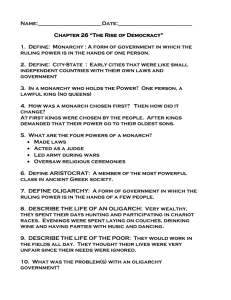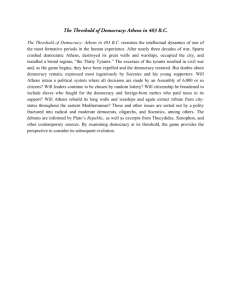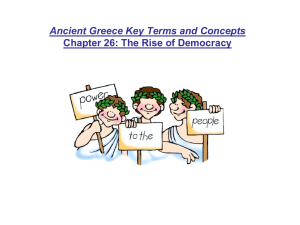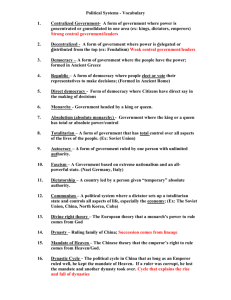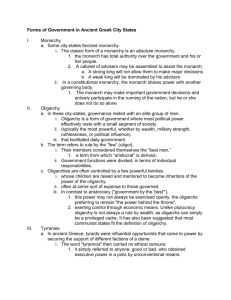Rise of Democracy in Ancient Greece: Monarchy to Modern Gov
advertisement
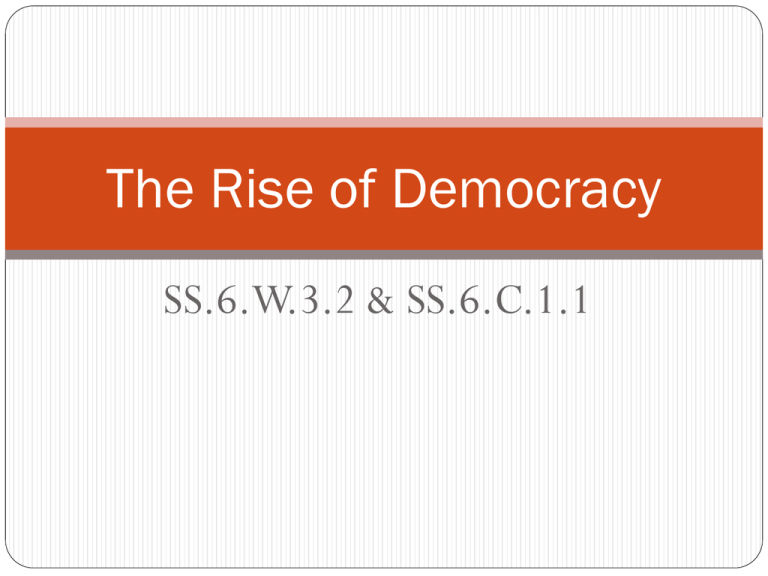
The Rise of Democracy SS.6.W.3.2 & SS.6.C.1.1 Monarchy: 2,000 - 800 B.C.E. Ruling power is in the hands of one person, usually a king Usually the oldest son would inherit the throne from his father. Kings of ancient Greece had many powers. They made laws, acted as judges, conducted religious ceremonies, and led the army during wars. By about 800 B.C.E. aristocrats in most city-states overthrew the monarchy and took power for themselves Aristocrat: a member of a wealthy and powerful class of people Oligarchy: 800 – 650 B.C.E. Ruling power is in the hands of a few people In the case of Greece, it was usually a few wealthy men. Under oligarchs, rich became richer and poor became poorer. Eventually, the poor turned to leaders, usually from the military, who promised to improve their lives. Backed by the people, these leaders used their soldiers to overthrow the oligarchs. Tyranny: 650 – 500 B.C.E. Around the mid 600s B.C.E. people in many Greek city-states turned to men who promised to change the government. These men became known as tyrants. Tyranny: ruling power in the hands of one person who is not a lawful king Tyrants usually took and kept control by force. Many tyrants ruled well and did much to help the people, but others abused their power and were eventually forced out by the people. Democracy: 500 B.C.E. – Present? After the people of Athens overthrew the tyrant, they decided to govern themselves. They developed democracy which means rule by the people. All citizens in a democracy share ruling power. The city had an assembly or lawmaking group where any free man could speak and vote. Women and slaves were not considered citizens and therefore could not vote. Democracy Yesterday and Today Ancient Greek democracy was different from democracy today. The government of Athens was a direct democracy where every citizen can vote on every issue. The United States today is a representative democracy where people vote for representatives (senators, congressmen, etc.) who decide issues in their name.
